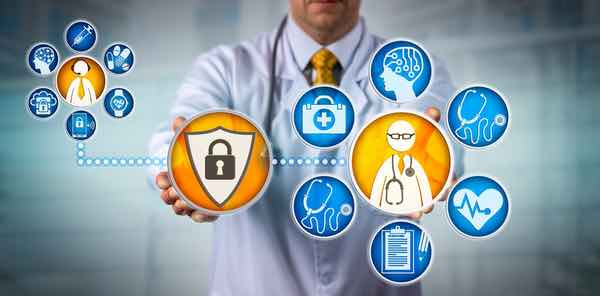Computer-aided design (CAD) is often associated with engineering, primarily because engineers use it all the time in envisioning their design plans. However, constructing houses and buildings isn’t the only thing it’s good at. Any industry that relies on computer technology to get jobs done will benefit from CAD, including healthcare.
For the record, this isn’t referring to designing hospitals and clinics but to detecting diseases and managing patients, among other tasks. Computer-aided diagnostics (CADx) alone is a USD$700-plus-million market set to breach the billion-dollar mark within six years—and it isn’t hard to see why. Medical professionals see CADx as an invaluable help in delivering better patient care.
But if healthcare settings plan for CAD software to take the helm, they must have the appropriate infrastructure supporting it. In this regard, protecting health-related data from hacking and other cyber incidents should be a priority. Below are some steps worth taking.
1. Consider Cloud Computing
Many online sources like this guide to cloud computing in healthcare agree that the cloud is vital in today’s healthcare scene. CADx aside, cloud computing is also at the heart of managing health records and delivering diagnosis and treatment remotely. It’s estimated that over half of mission-critical healthcare tasks are being handled by the cloud.
Regardless, many healthcare institutions still doubt adopting the cloud for several valid reasons, security being one of them. Cloud-based information storage is essentially putting one’s eggs in one basket, convenient for retrieval and sharing but prone to data theft. However, experts believe the latter is more likely to be the case if it lacks adequate data encryption.
As such, organizations should consider the finer details when considering cloud computing as well. They must not make the mistake of thinking that an untouchable cybersecurity framework exists because there’s no such thing. Such a mindset is healthy, as it encourages organizations to beef up their cybersecurity as much as possible.
2. Keep Software Updated
Many computer users are guilty of putting off software updates, with one reason being that they conflict with productivity. However, cybersecurity experts stress that it’s one of the most basic responsibilities computer users can do to thwart today’s threats.
Healthcare providers and their patients can be left helpless if hackers lock them out of their own health records or, worse, while using medical equipment. Last year, cybersecurity experts shared their findings of potential attacks on some medical devices. If connected to the internet but runs an older software version, these machines could potentially stop a patient’s care when hacked.
The closest the healthcare industry has come to such a scenario occurred two years ago when a ransomware attack allegedly disrupted a German patient’s emergency care, leading to her death. While authorities later concluded that her poor condition contributed to her death more than the ransomware, the possibility of computer-assisted patient care failing at a critical time is there.
Essentially, this tip urges organizations not to hit ‘Remind Me Later’ when prompted to update. It may temporarily disrupt operations, but the time and money lost is a small price compared to losing a life that could’ve been saved. If the software’s no longer supported, get a new one.
3. Have A Defense-In-Depth (DID)
A DID cybersecurity system works on the premise that no single cybersecurity solution can keep out every attack. It relies on every aspect working together, even those that aren’t software, such as the users themselves (more on them in a bit).

Building a formidable DID depends on the organization’s needs. However, it typically possesses three essential controls: physical, technical, and administrative. If one of these three controls fails to stop the attack, it falls to the other two.
- Physical controls – They protect the hardware from theft or tampering (e.g., security cameras, biometric and card scanners, alarm systems).
- Technical controls – They refer to the actual hardware and software and the necessary skills to operate them (e.g., firewalls, and endpoint detection).
- Administrative controls – They implement policies for users to reduce the probability of falling victim to social engineering methods (e.g., forming strong passwords).
The keyword here is redundancy, which some experts consider a waste of resources in healthcare settings. Sure, paper records may be inefficient, but they suddenly become instrumental in saving lives when a cyberattack places every electronic record under lock and key.
4. Train The Staff
Finally, no matter how sophisticated CAD infrastructure is, it won’t hold a candle to most threats if people don’t know how to use it. ‘Humans are the weakest link,’ as any cybersecurity expert will say, backed by evidence that human error causes most data breaches.
With adequate training, however, humans can also be the greatest asset in cybersecurity. Spare no expense in educating them on what hacking attempts look like and how to respond to them if one manages to get through. In the context of healthcare, inform the staff of the necessity of keeping patient records confidential.
Conclusion
The consequences of failing to stop cyberattacks shouldn’t be a surprise to anyone working in healthcare. Losing money to fraud is one thing, but losing one’s life due to someone exploiting outdated software is another. Healthcare facilities should have robust security measures to avoid such tragedies, even if there hasn’t been any recorded instance.


